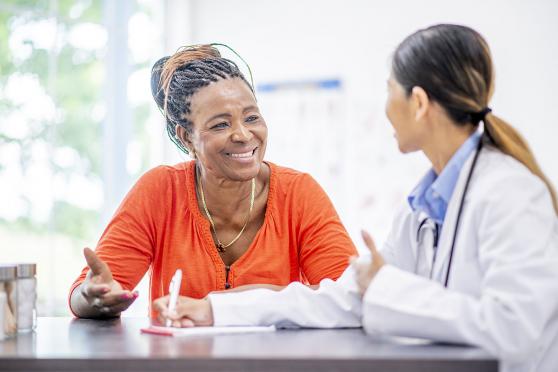What’s your risk of falling?
Falls are a leading cause of injury and hospitalizations among older adults, and a leading source of worry too. After all, one wrong step can chip away at your ability to stay independent. Here’s how to determine (and reduce) your fall risk.

The Centers for Disease Control and Prevention (CDC) reports that most older adults (more than half) keep their slips and tumbles a secret from their doctors.
That’s a shame, because there are simple strategies that can keep you steady on your feet and prevent falls. A fall assessment is one of them. It’s an important part of an annual wellness visit. But you can also do some quick tests on your own to check your balance.
These three DIY checks are part of the CDC’s Stopping Elderly Accidents, Deaths, and Injuries (STEADI) Initiative. While only your doctor can accurately determine your fall risk, these tests can give you some good clues. Give them a try, and remember to share your results with your doctor at your annual wellness visit.
Timed up-and-go test
What it tests: Your manner of walking
How to do it:
- Sit in a chair and start a timer.
- Stand up.
- Walk about 10 feet at your regular pace.
- Return to your chair and sit.
- Stop the timer.
If it takes you 12 seconds or more, you may be at higher risk of a fall.
30-second chair stand test
What it tests: Strength and balance
How to do it:
- Sit in a chair with your arms crossed over your chest.
- Stand up and sit down again.
- Repeat for 30 seconds.
- Count your reps as you go.
Women are considered steady if they can do 11 reps in their 60s; 12 for men. In your 70s, the target numbers are 10 for women, 11 or 12 for men.
4-stage balance test
What it tests: How well you can keep your balance
How to do it: Move through the following positions. Aim to hold each for 10 seconds. You may want to do this next to a railing.
- Stand with your feet side by side.
- Move one foot halfway forward, so the arched center of your foot is touching the big toe of your other foot.
- Move one foot fully in front of the other, so the toes are touching the heel of your other foot.
- Stand on one foot.
If you can’t hold position 2 or position 3 for 10 seconds, or if you can’t stand on one foot for five seconds, it could mean you are at higher risk of a fall.
Dr. Heidi says: Want to improve your results? Set aside a few minutes each day to repeat these DIY checks.
Plus: Tips to fall-proof your home
Most falls happen in and around the home. Set aside a few minutes to give your house a checkup. Look out for these common hazards:
- Crowded furniture arrangements
- Clutter on the floors
- Loose or unsecured area rugs
- Showers and tubs without handrails
- Slippery stairs
- Poorly lit hallways and bathrooms


